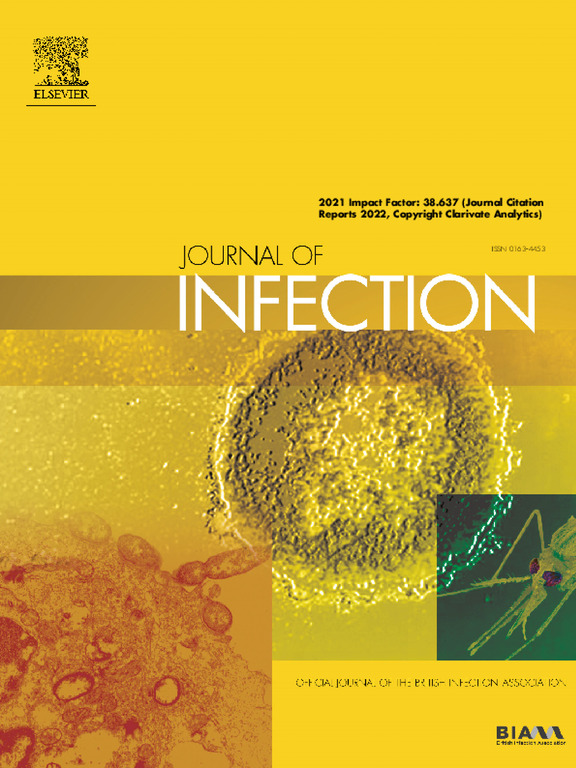Malaysia outbreak survivors retain detectable Nipah antibodies and memory B cells after 25 years
IF 14.3
1区 医学
Q1 INFECTIOUS DISEASES
引用次数: 0
Abstract
Objective
To evaluate the long-term humoral immune response to Nipah virus (NiV) in a cohort of 25 survivors after 25 years of post-infection.
Methods
A total of 25 survivors of NiV infection from the 1998 outbreak were recruited for sample collection. The serum IgG antibody response to NiV antigens, specifically nucleocapsid (N), fusion glycoprotein (F) and attachment glycoprotein (G) was evaluated using ELISA. Additionally, the samples were tested for neutralizing antibodies and memory B cell responses.
Results
Detection rates of anti-NiV-F and anti-NiV-G were 56% and 60%, respectively, among the survivors at a 1:100 dilution, whereas only 20% were specifically reactive to rNiV-N. Notably, all samples that tested positive for NiV-F and NiV-G at this dilution also exhibited neutralizing antibodies, highlighting the specificity of these assays. Live virus neutralization assay showed that 72% of survivors had detectable neutralizing antibodies, with varying titers, indicating long-lasting immune memory. Furthermore, memory B cell responses specific to NiV-F and NiV-G were observed in six randomly selected survivors, suggesting the presence of enduring immunological memory.
Conclusions
These findings highlight the potential of NiV-F and NiV-G as reliable markers for NiV exposure and underscore the need for continuous surveillance and research. Such efforts are crucial for advancing vaccine development and improving preparedness for future NiV outbreaks.
马来西亚疫情幸存者在25年后仍保留可检测的尼帕病毒抗体和记忆B细胞。
目的:评价25例尼帕病毒(NiV)感染后25年幸存者的长期体液免疫反应。方法:收集1998年疫区感染幸存者25例。ELISA法检测血清IgG抗体对NiV抗原,特别是核衣壳(N)、融合糖蛋白(F)和附着糖蛋白(G)的反应。此外,对样品进行了中和抗体和记忆B细胞反应的测试。结果:在1:100稀释的幸存者中,抗niv - f和抗niv - g的检出率分别为56%和60%,而只有20%对rNiV-N有特异性反应。值得注意的是,在这种稀释下,所有NiV-F和NiV-G检测呈阳性的样本也显示出中和抗体,突出了这些检测的特异性。活病毒中和试验显示,72%的幸存者可检测到不同滴度的中和抗体,表明免疫记忆持久。此外,在随机选择的6名幸存者中观察到NiV-F和NiV-G特异性的记忆B细胞反应,表明存在持久的免疫记忆。结论:这些发现强调了NiV- f和NiV- g作为NiV暴露的可靠标记物的潜力,并强调了持续监测和研究的必要性。这些努力对于推进疫苗开发和改善对未来NiV疫情的防范至关重要。
本文章由计算机程序翻译,如有差异,请以英文原文为准。
求助全文
约1分钟内获得全文
求助全文
来源期刊

Journal of Infection
医学-传染病学
CiteScore
45.90
自引率
3.20%
发文量
475
审稿时长
16 days
期刊介绍:
The Journal of Infection publishes original papers on all aspects of infection - clinical, microbiological and epidemiological. The Journal seeks to bring together knowledge from all specialties involved in infection research and clinical practice, and present the best work in the ever-changing field of infection.
Each issue brings you Editorials that describe current or controversial topics of interest, high quality Reviews to keep you in touch with the latest developments in specific fields of interest, an Epidemiology section reporting studies in the hospital and the general community, and a lively correspondence section.
 求助内容:
求助内容: 应助结果提醒方式:
应助结果提醒方式:


